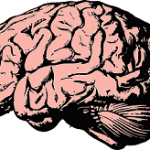
I’ve teamed up with Skylar Wooden, a Technical Writer, and Katie Butler, a CPA, the ladies behind Pare and Flourish to bring you some technical writing tips for engineers. 
Engineers are incredibly knowledgeable people. You understand how to design and build the most complex of structures. You analyze and evaluate intricate data. But, many engineers miss one of the most important aspects of any profession—explaining your work to others. Whether it’s to tell someone how to perform a task, or report on a project to a superior, relaying information is just as critical as knowing the information.
As an engineer, you can offer your expertise in two ways: verbal or written communication. You likely deal with the verbal aspect of this on a daily basis when you answer questions, explain a process, or even talk about your job with your friends. So, how often are you writing? [Read more…]







